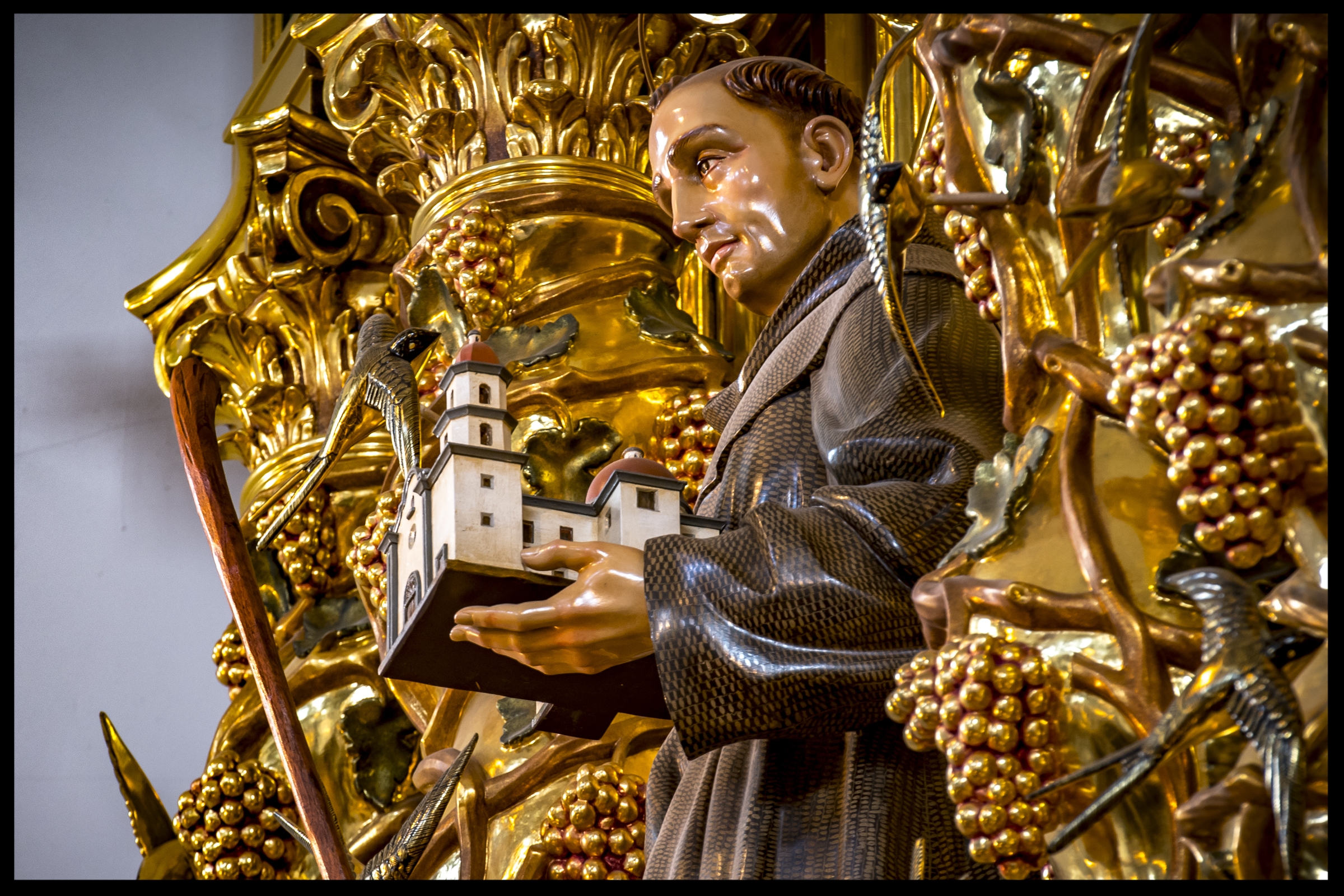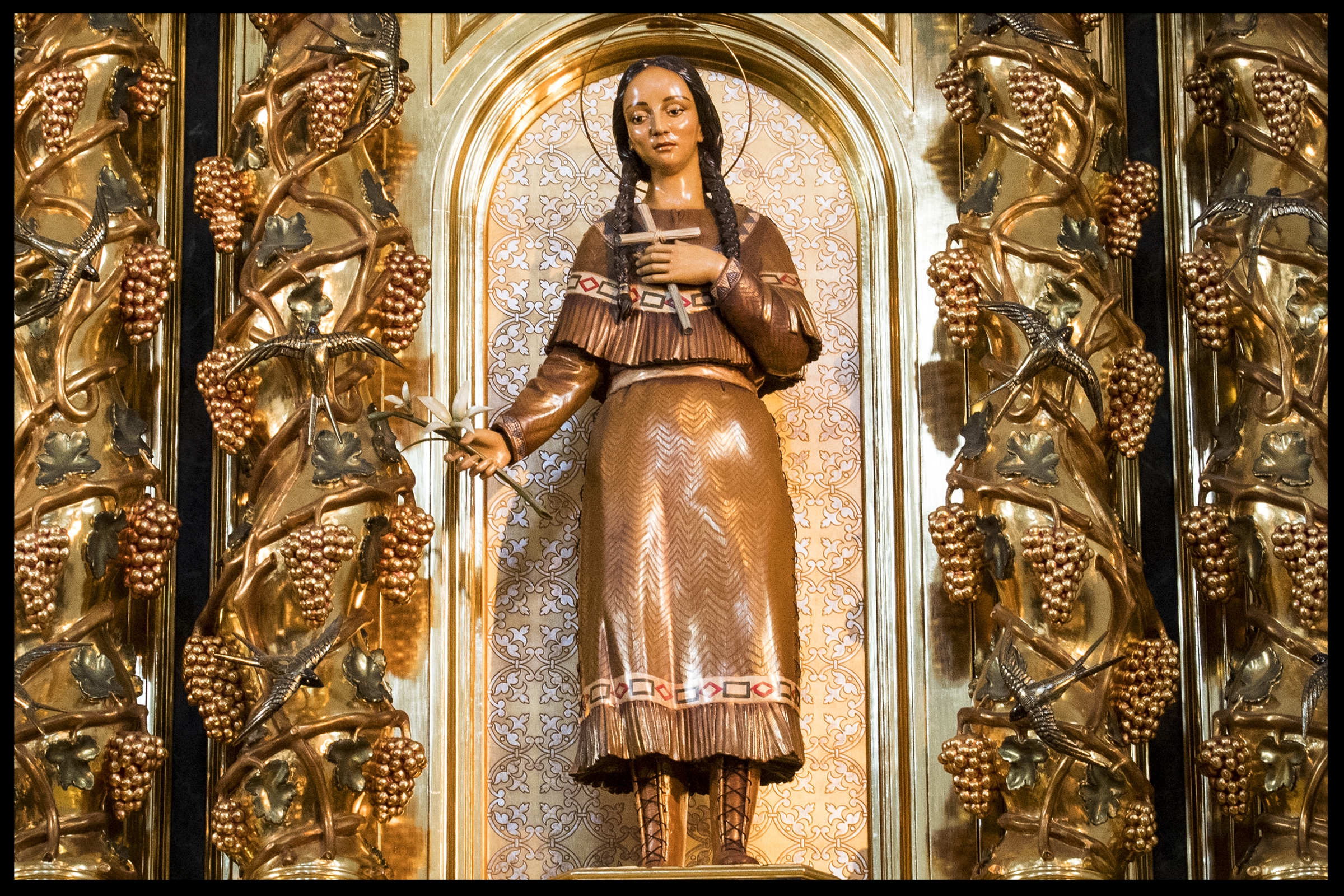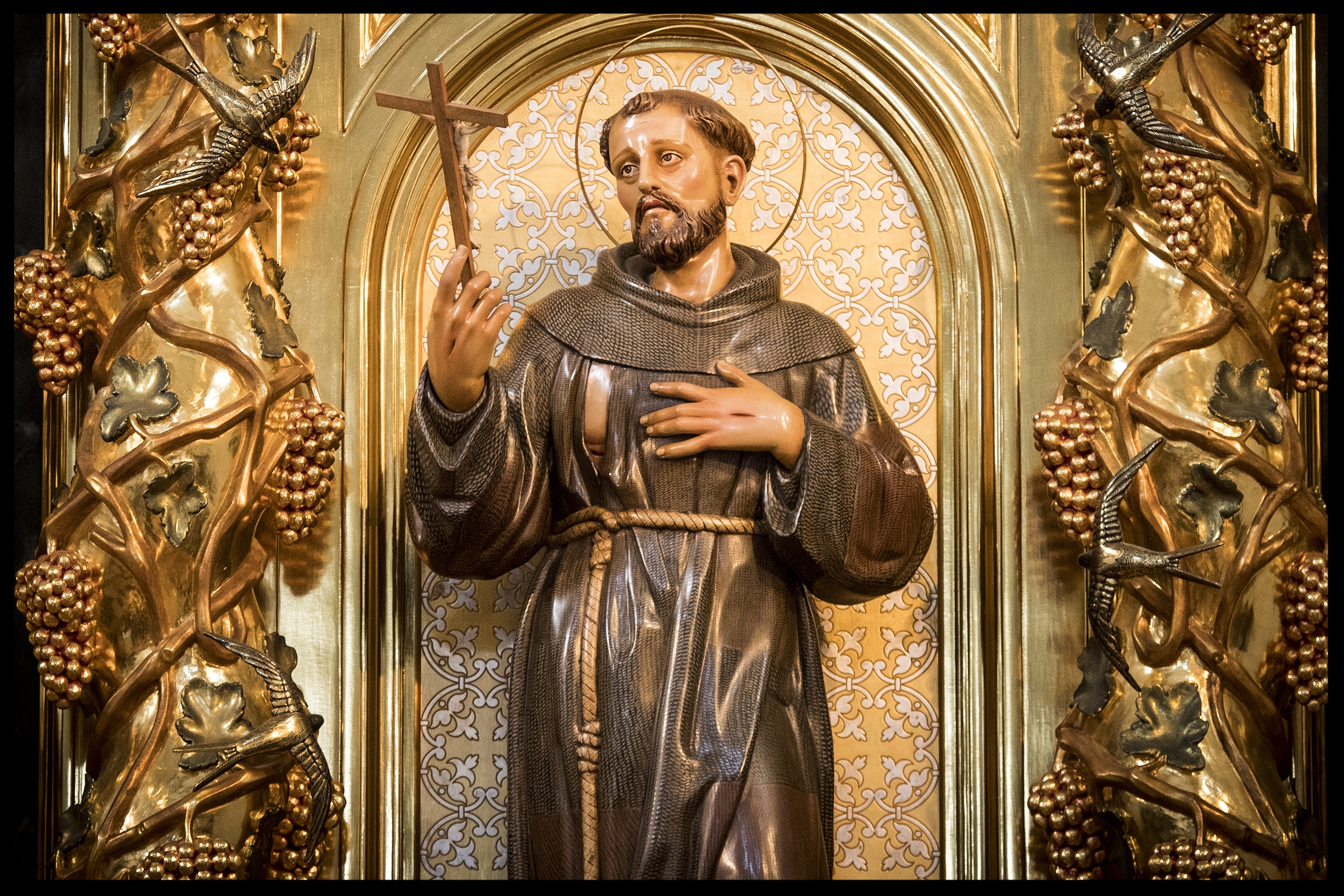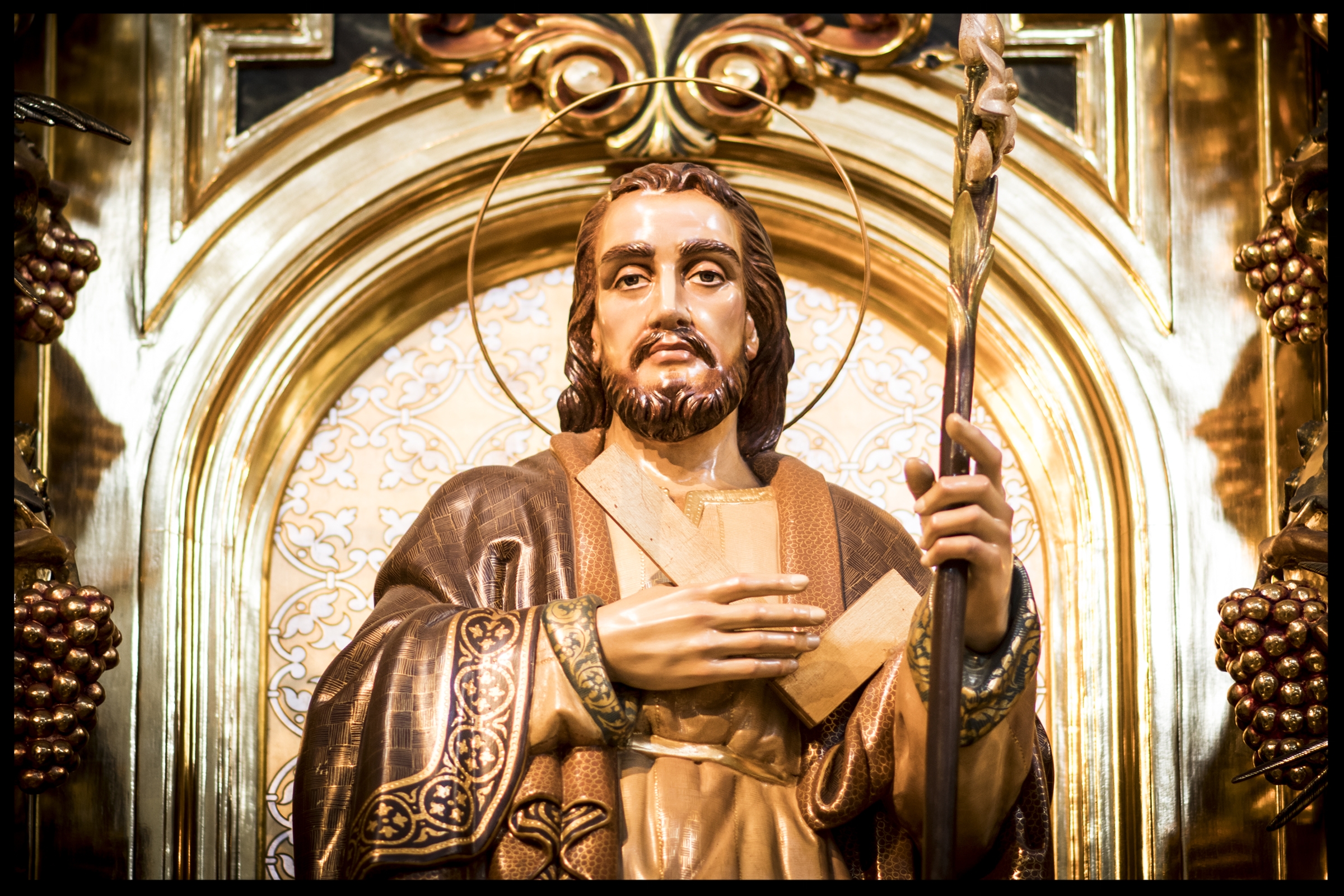The Grand Retablo
Mission Basilica San Juan Capistrano's Grand Retablo. Photography by Roderick Fenn ©2009
by Daniel Mitsui - Taken from the November 15, 2007 issue of Adoremus.
“The venerable and holy images, as well in painting and mosaic as of other fit materials, should be set forth in the holy churches of God… to these should be given due salutation and honorable reverence”.1
Thus did the Second Council of Nicaea, held in 787, definitively resolve the First Iconoclastic Crisis and establish forever that the veneration of holy images is not idolatrous. It is a sacred tradition that the entire Church is bound to uphold.
More than seven centuries later, the wisdom of Nicaea II was reiterated at the Council of Trent:
The images of Christ, of the Virgin Mother of God, and of the other saints are to be placed and retained especially in the churches, and … due honor and veneration is to be given them.2
And more than four centuries after Trent, this teaching was reaffirmed at Vatican II:
The practice of placing sacred images in churches so that they may be venerated by the faithful is to be maintained.3
The two later councils insisted on propriety and right order in the content and placement of religious art — and Conciliar documents, according to the wisdom of Pope Benedict XVI, must be read with a “hermeneutic of continuity” rather than of rupture. Later councils do not cancel earlier ones.
The brilliant frescoes of early Roman and Byzantine churches, the marvelously ordered sculptural programs of Gothic cathedrals, and the dramatic altarpieces of Baroque oratories represent the continuous tradition of the Church, and it is within this tradition that the concepts of propriety, right order and noble simplicity must be understood.
Holy images are both didactic (teaching) and anagogical (mystical or spiritual interpretation); that is, they teach correct doctrine to the faithful and they also indicate the heavenly Jerusalem, where saints and angels gather around the altar to worship the Lamb of God.
In this latter role images must be understood not as private devotional aids that happen to occupy the same building as the liturgy, but as integral parts of the liturgy itself.
One magnificent example of liturgical art that demonstrates this continuity is the new Baroque-style retablo in the historic Mission Basilica of San Juan Capistrano, in Southern California. (See cover illustration.)
Photographs by Gary Tinnes © 2007
The mission, established in 1776 by Franciscan Father Junipero Serra, is named for 14th-century theologian Saint John of Capistrano, Italy, and is the seventh of the nine Franciscan missions. A retablo (or reredos) is a large decorative altarpiece placed at the rear of an altar, filling the apse of a church with statues, paintings, columns and the like.
The new mission basilica is a reconstruction of the original Great Stone Church, begun in 1796, dedicated in 1806, then destroyed by a massive earthquake on the Feast of the Immaculate Conception, December 8, 1812, and never rebuilt.
The the new mission church, dedicated in 1987, was raised to the status of a minor basilica in 2000, and is also a national shrine. But for nearly two decades, it lacked any interior ornament other than a crucifix.
The new retablo fills that void. It was designed in a style consistent with that of the original church —the Churrigueresque style of the 17th and 18th centuries, an extreme elaboration of Baroque forms that is found in many of the most prestigious churches built in Latin America. [“Churrigueresque” is the Spanish Rococo architectural style named after the architect José Churriguera (1665-1725). – Ed.]
Dedicated in July 2007 in the presence of Cardinal William Levada, the retablo towers 44 feet behind the altar of sacrifice in the apse of the basilica.
A similarly elaborate retablo undoubtedly would have filled the same space in the original Great Stone Church — and it is consistent in style with the retablo in the mission’s small Serra chapel, named for the mission’s founder, Father Junipero Serra (1713-1784). Built in 1777, this chapel is still in use, and is the considered the oldest church in California.
The new retablo in the mission basilica was created at Talleres de Arte Granda in Alcalá de Henares, Spain. In its 116 years of activity, this sacred art workshop has produced more than 900 retablos and high altars.
Eighty-five craftsmen worked on the mission project, including some of the same designers and artisans who created the interior furnishings at the Shrine of the Blessed Sacrament in Hanceville, Alabama; the altarpiece at the Church of Our Lady of Walsingham in Houston, Texas; and the adoration chapel at Our Lady of Corpus Christi Liberal Arts College in Corpus Christi, Texas.
The new retablo is constructed of Brazilian cedar, and supported by twisting Solomonic columns, the characteristic architectural element of the early Churrigueresque style. It is profusely decorated with hand-carved grapevines, cliff swallows and cherubs. Its surface is almost entirely covered in gold leaf, applied by hand according to traditional methods.
A sculptural group represents the Holy Trinity as the Throne of Mercy, with God the Father holding the Crucifix and the Holy Spirit flying above in the form of a dove (see detail.)
The Holy Trinity as the Throne of Mercy, with God the Father holding the Crucifix and the Holy Spirit flying above in the form of a dove. Photography by Roderick Fenn ©2017
Four especially important heavenly intercessors for the mission and the parish are represented by hand-carved statues: Blessed Junipero Serra, the founder of the mission; Saint Joseph, the chosen patron of his efforts; Saint Francis, the father of his order; and Blessed Kateri Tekawitha (see detail below). All of the statues are finished in estofado, in which hand-etched patterns in the painted surface reveal a brilliant layer of gold underneath the paint.
An original painting of Our Lady of Guadalupe, canonically coronated (crowned) by Cardinal Levada, completes the work (see detail.)
An original painting of Our Lady of Guadalupe. Photography by Roderick Fenn ©2017
The mission’s retablo is the most ambitious work of its kind yet made by Talleres de Arte Granda for an American client, standing proof that such magnificent works of art are not prohibitively difficult to create in our times.
It is indeed far easier to build such a work of art now than it was in the Baroque era. By combining modern technology in design, construction, chemistry and woodworking with centuries-old artisanal methods in sculpture and painting, the artisans at Talleres de Arte Granda finished in fourteen months what might have taken fourteen years to finish in centuries past. And modern elements, such as a hidden frame of steel beams that secure it from damage by earthquake, assure a longevity greater even than that of the original mission buildings.
Notes:
1 The Seven Ecumenical Councils of the Undivided Church. Translated by H. R. Percival. In Nicene and Post-Nicene Fathers. Edited by P. Schaff and H. Wace. (Grand Rapids, MI: Wm. B. Eerdmans, 1955), XIV.
2 Canons and Decrees of the Council of Trent. Translated by Rev. H. J. Schroeder (Herder: St. Louis and London, 1941).
3 Sacrosanctum Concilium 125.
***
Daniel Mitsui is the Research and Design Assistant at Granda Liturgical Arts, the American office of Talleres de Arte Granda. (www.usagranda.com)





